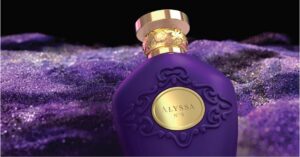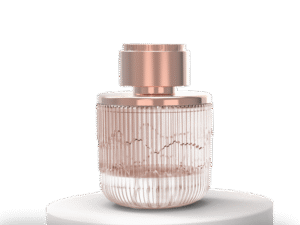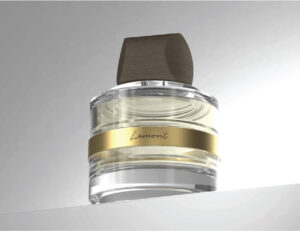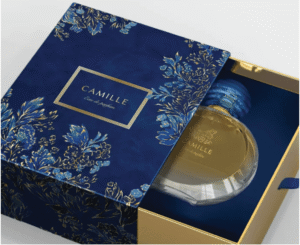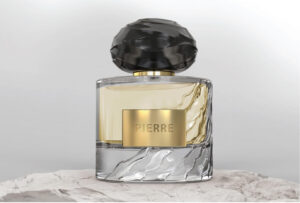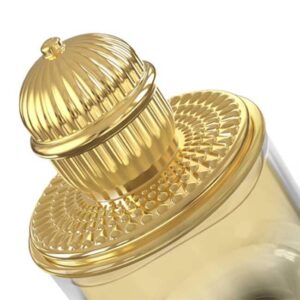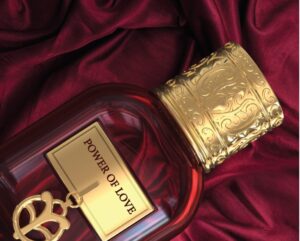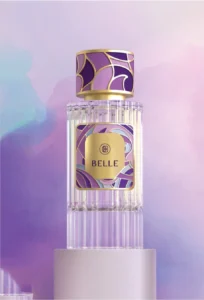Some may think that designing a perfume bottle is easy – you just sketch it out and then give that idea to the supplier, right? But life is rarely as simple as it might seem. Glass is not an exact form for modelling, by this we mean that you cannot achieve exactly what you want. If you are injection moulding in plastic you can have much more complexity in your design than you can in glass. ,
What are the limitations to what you can achieve with glass?
For example sharp edges or very small patterns and a very high emboss level to the glass is difficult. Once we tried to make an L shape, but found out that this was impossible for our suppliers to achieve. Having a very detailed pattern all around the bottle can be difficult, as it can cause demoulding issues. This is not to say that you cannot have a bottle with a pattern all around. However, you have to approach your design with a different mindset to solve the issues. As for most industries, we are limited by the technology of manufacture. So how is it best to approach the design of a perfume bottle? Let’s explore the steps to success of a bottle which is easier to manufacture.
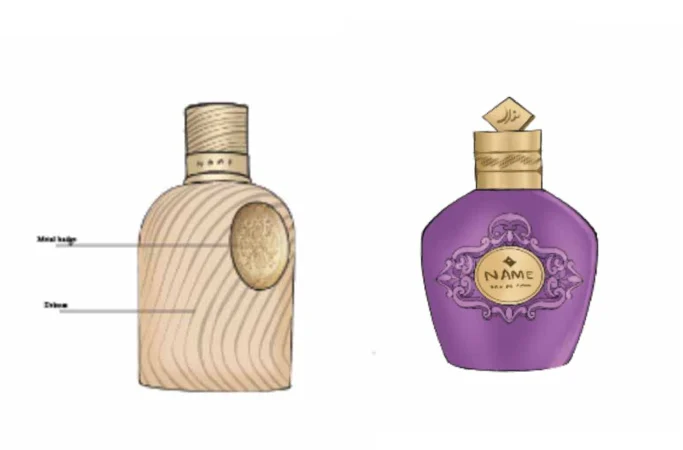
Step by Step Approach to Perfume Bottle Design
- You guessed it right – the first step is conceptualisation and maybe sketching out the bottle. Getting your inspiration and putting pen to paper. During this process make efforts to think of what shape the bottle will be. Is it a square, cylinder, oval, unusual shape? Is it taller at the top than the bottom? Top view and bottom view is helpful to understand the shape as well as maybe side profile, front and back profiles.
- Modelling of the bottle is the next step and this is where we ideally use an engineering software which is able to calculate the volume and weight of the glass. It will calculate the bottle volume – the overflow capacity as well as the normal fill capacity. You should never assume that your perfume will fill right up to the neck of the bottle, as perfume may expand in heat. This can cause the bottle to crack or explode. Usually 5-10% of the total volume space is left empty to allow for liquid expansion in hot temperatures.
Finalise the bottle design and hold it in your hand..
3. Make a 3D print of your bottle in order to test how it feels in the hand. Is it comfortable to hold? Will you be able to spray the pump easily when it is in your hand? Comfort and convenience are very important for the consumer experience.
4. After finalising the design complete the technical drawings and submit to your supplier. Ask questions about feasibility to understand if your design is realistic and can be made exactly as per your design. Often small changes have to be made, as gravity makes the glass fall a little differently in real life. Engineering software displays everything perfectly straight and even, but there are small variances in real life. The top part of the glass bottle is usually less thick due to gravity, more glass falls to the lower sides and base. Therefore the glass wall may be a little less thick in the shoulder area of the bottle and this is perfectly normal.
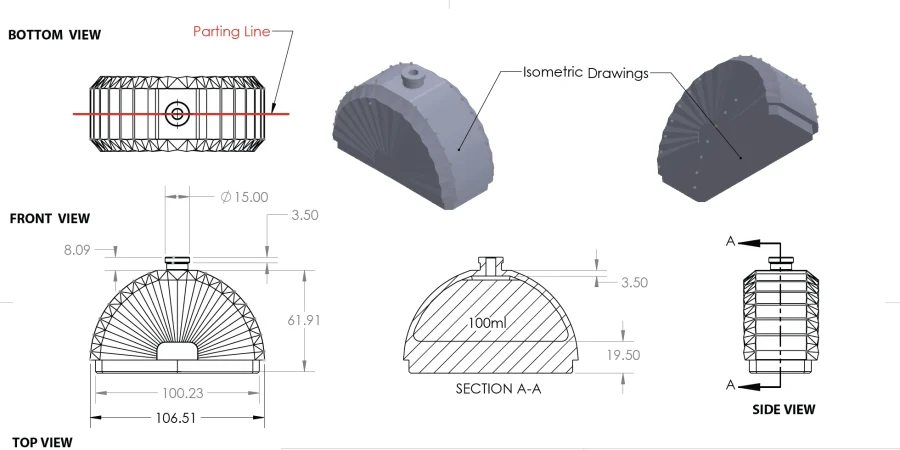
Now you are happy with your sample...
5. When you and your supplier are happy with the bottle design and technical drawings, then you can start the bottle mould. Normally it takes 6 to 8 weeks to make a new mould and to create the first pilot samples. Waiting for the correct weight of glass to be scheduled usually affects how quickly the pilot samples can be made.
6. If you are happy with the pilot samples, then you will be happy to ask the supplier to go into full production. This will require further moulds, as the production run cannot be made with only one pilot mould. Again, the timeline for getting your manufacture will depend on the factory schedule for the weight that you require.
What Should I know about Perfume Bottle Design?
- Over complex shapes can be costly to manufacture, though it looks beautiful on a computer screen. Often we can only manufacture some designs in a semi- automatic machine. Unfortunately not many suppliers still have semi- automatic machines, which restricts the choice of supply partner.
- Ignore compatibility at your peril. Ensure that pump and cap are compatible with your glass bottle. Test thoroughly before commissioning new final moulds.
- Sustainability might bring with it certain challenges such as differences in glass colour or reduction in strength. Consider sustainability choices wisely before insisting on a certain path.
- Test your bottles thoroughly with liquid inside. Sometimes an over tall bottle or bottle which has a narrow depth can fall over easily.
- Sharp corners and asymmetrical lines look great on a computer, but they are not so easy to achieve in real life. Sharp edges mean a higher rate of rejection and breakage. If there are sharp patterns on your bottle design, chances are that they will be more rounded in real life than your design.
- Decorations like metallisation and special varnishes add a lot of complexity but also a lot of cost. This can add up to a pretty penny for the final bill.
- Heavier bottles are usually required for luxury projects. A heavy weight in the Middle East denotes a premium product.
- Usually the cost of a perfume bottle is assessed according to the bottle weight and the complexity of manufacture. Added bottle weight can also make your glass more expensive to ship, as containers have weight restrictions.
- The colour of the glass should be clear, not grey and the surface should be smooth. Any bottle with scratches on the surface signifies that the glass bottle mould needs polish or remaking.
- Do not forget about the lead-times. If you are also making custom collars and caps, you need to factor in a few more months for mould making and testing.
- Always decide your perfume pump before designing the bottle to avoid compatibility issues. If you change the pump to a different one at a late stage, it can cause unsightly gaps or elements which are loose.
- Glass weight in production always has a +/- tolerance of 5%. Therefore if you need a 250g bottle you might not always get exactly 250g each time. This is a norm within the industry which you have to accept.
- Smoother curved shapes are much easier to manufacture than square or rectangle, especially if there is a sharp edge.
- Less capable suppliers will struggle to make the base of the bottle even and flat. You should check the level of the base glass to ensure it doesn’t become a ‘ski slope’!
- Sometimes suppliers will not control the heat of the furnace well and small bubbles appear in the glass. This happens more often on a thick base to the bottle. Watch out for this issue and consider changing supplier if they cannot control it.
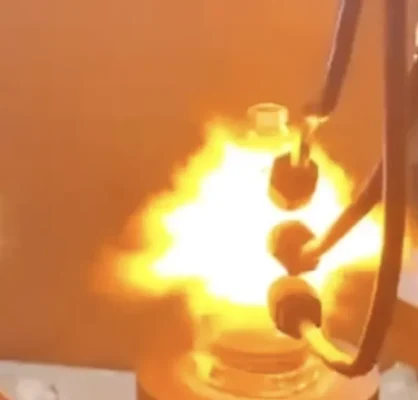
Consider options such as hand polishing or fire polishing to create a much smoother surface to your glass bottle.
Decoration and adornments such as metal badges add a lot of value to a perfume bottle. They not only make it look beautiful, but they add to the perceived value which helps if you are a luxury product.
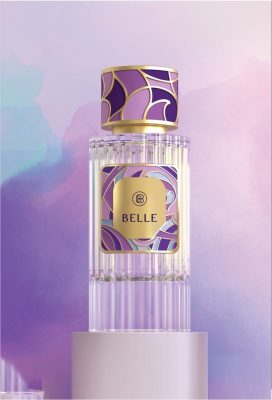
We hope that you enjoyed our article about glass perfume bottle design and manufacturing issues. Many of the issues we have mentioned above only become known after years of working on new projects with suppliers. Some suppliers have slightly different capabilities to others, but most will ask you to adhere to what we have mentioned above. If you would like to know more about perfume bottle design, why not check out our article on perfume pumps and how to select them. This will be very important to you when you are deciding which pump should go on your new perfume bottle.

